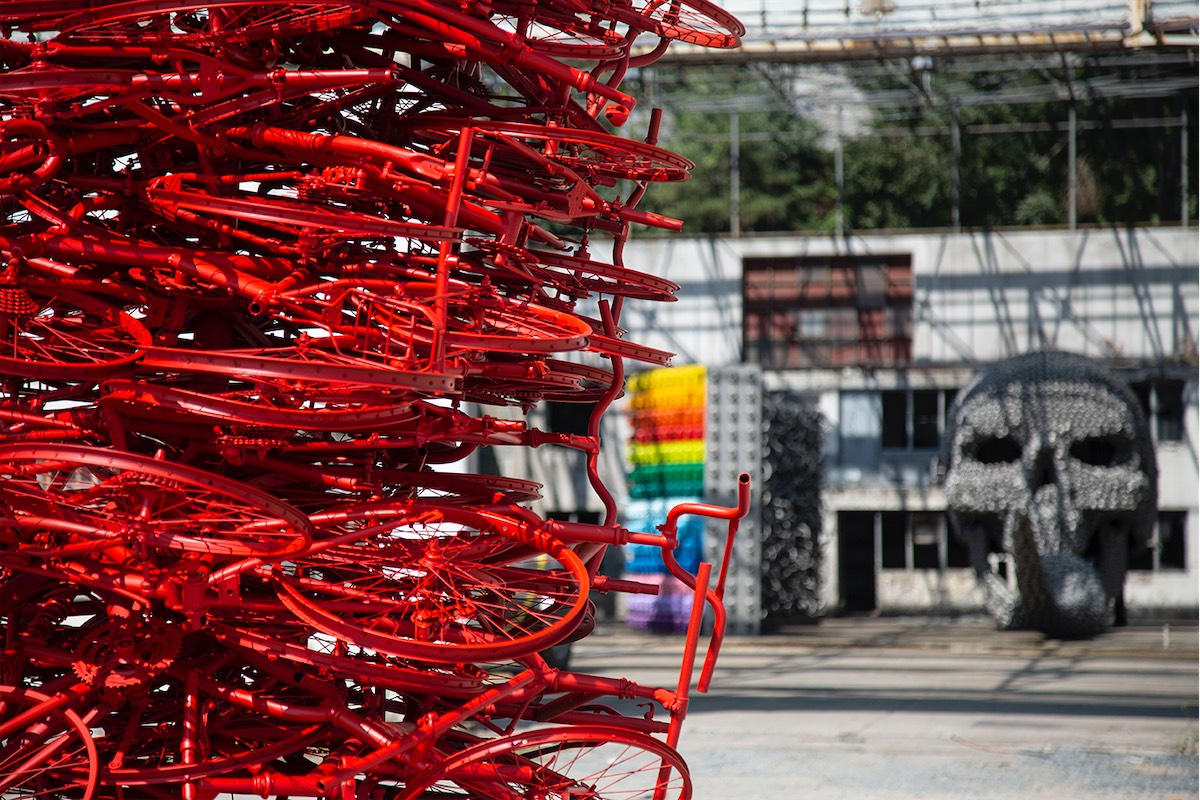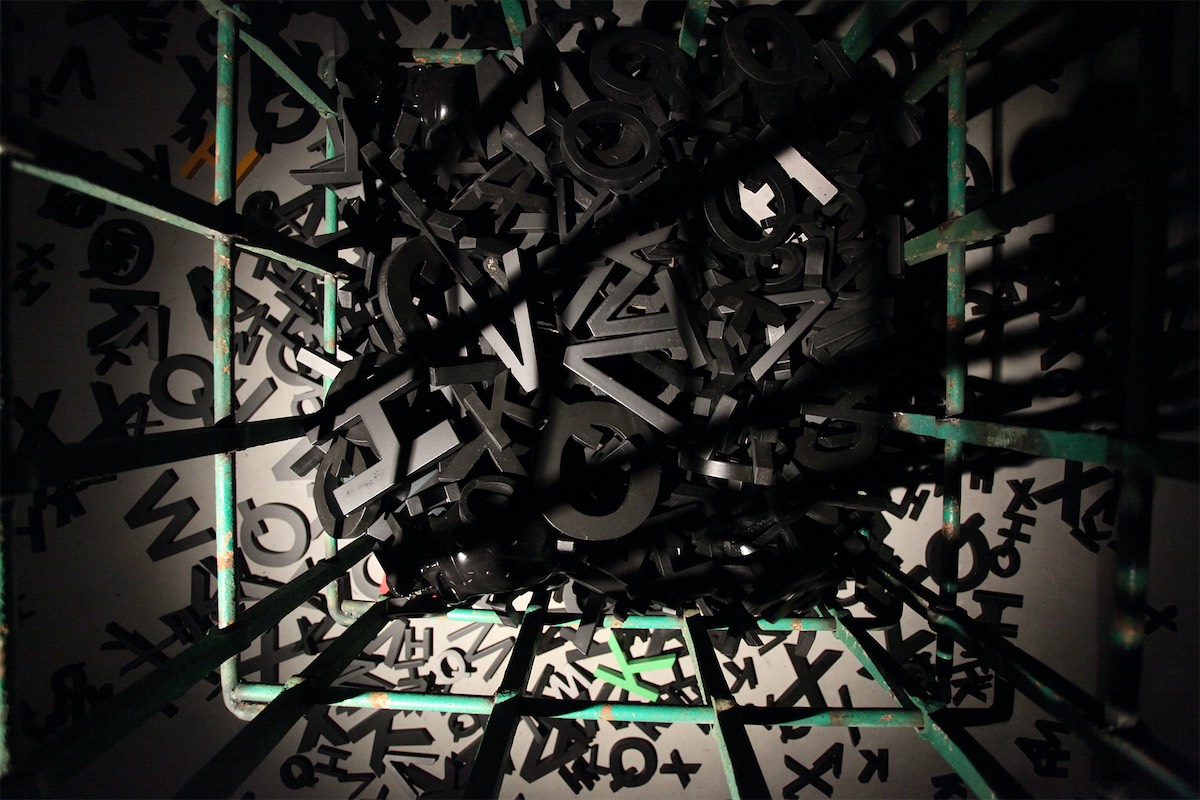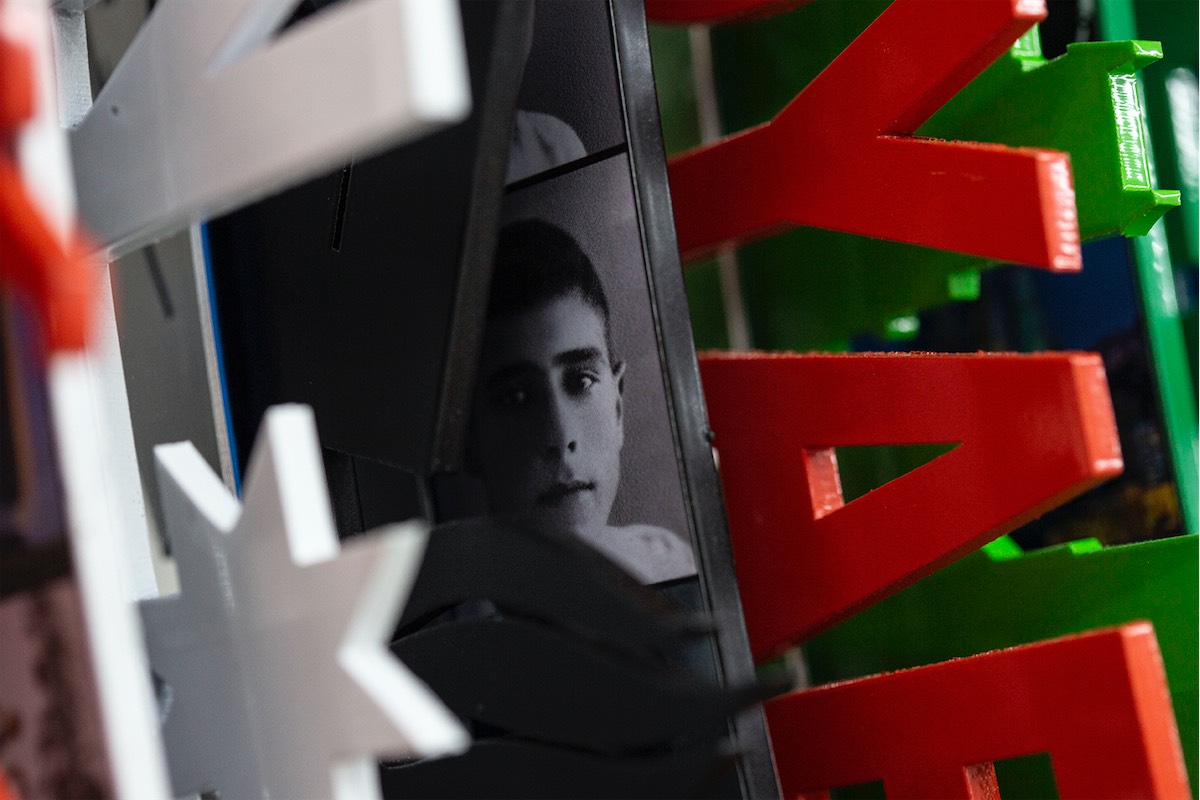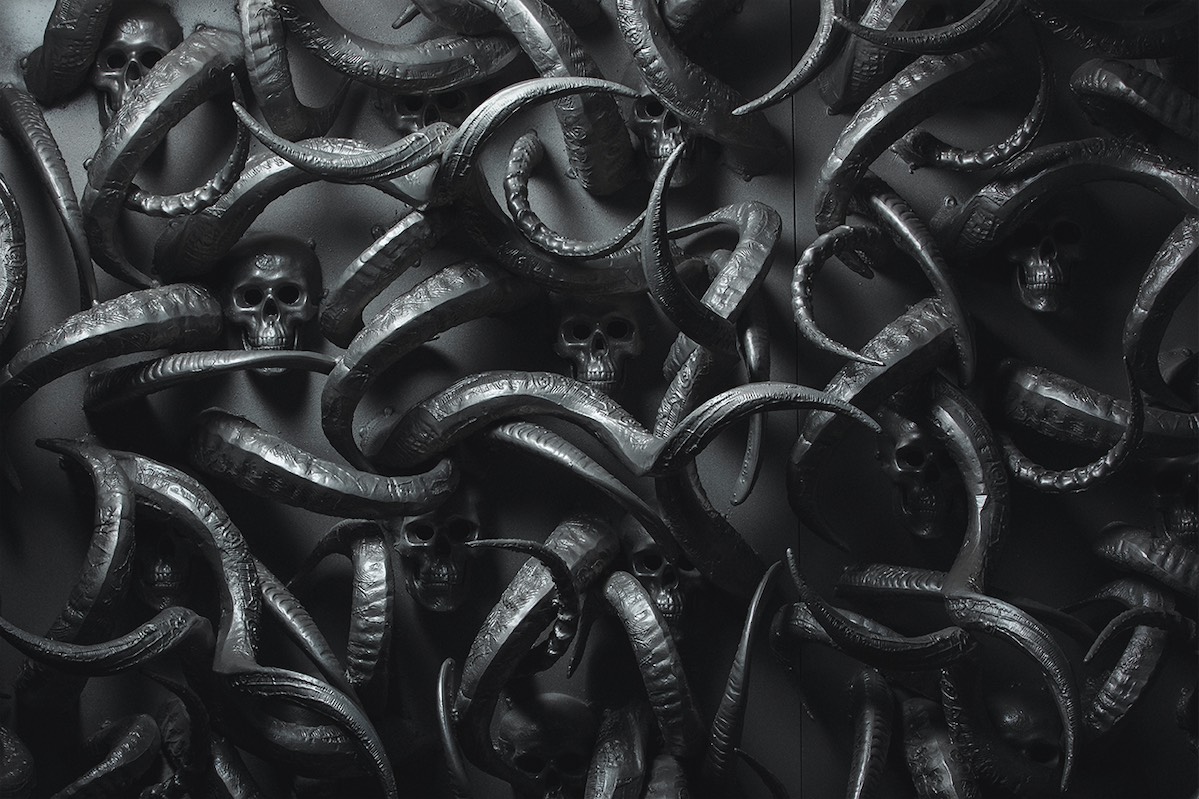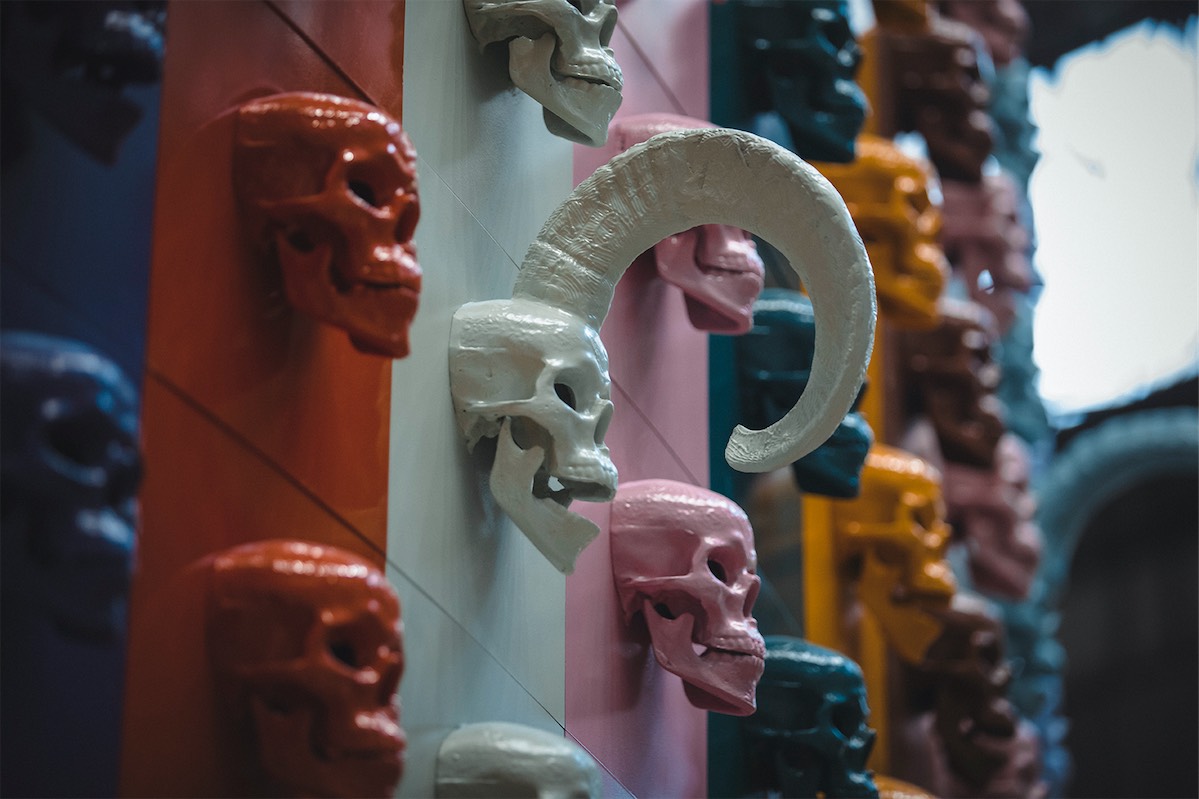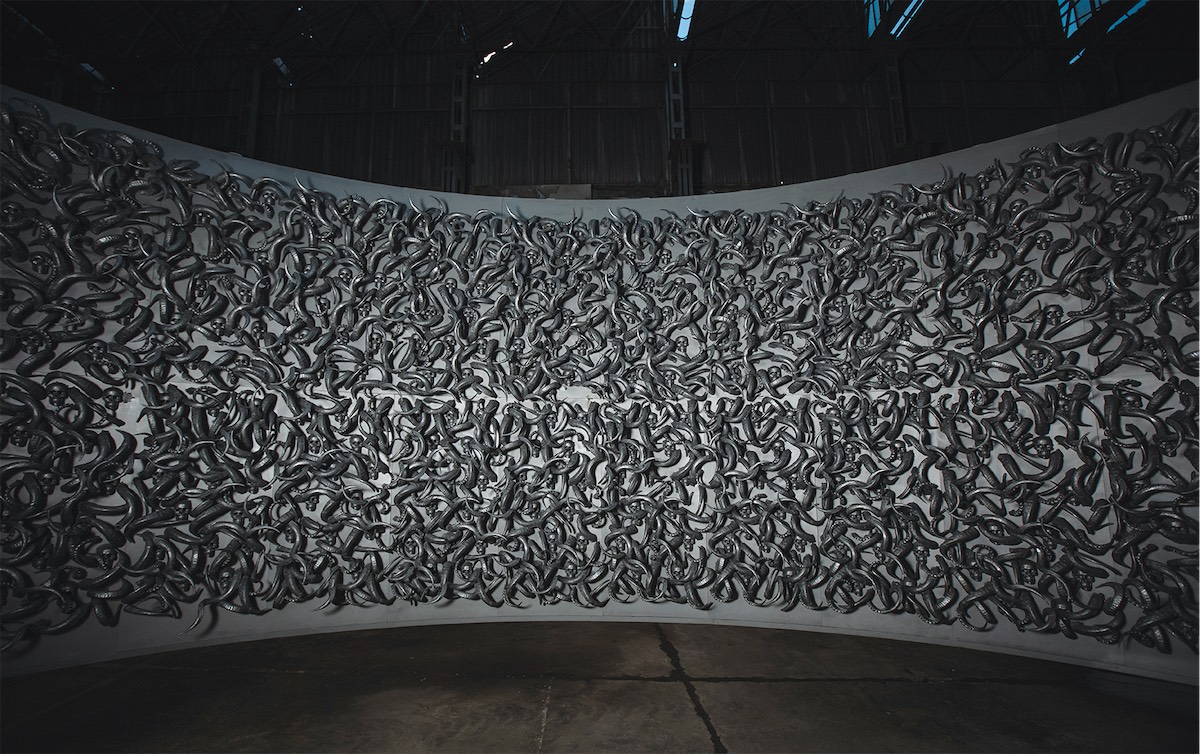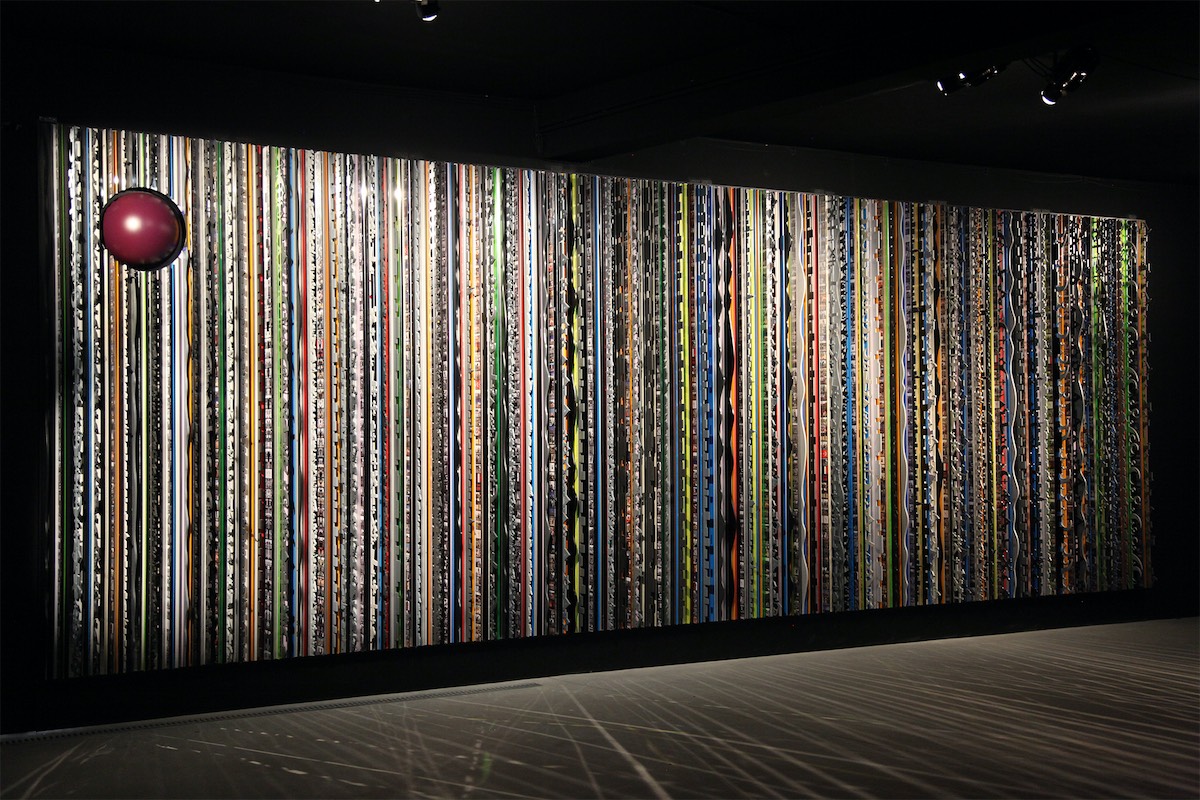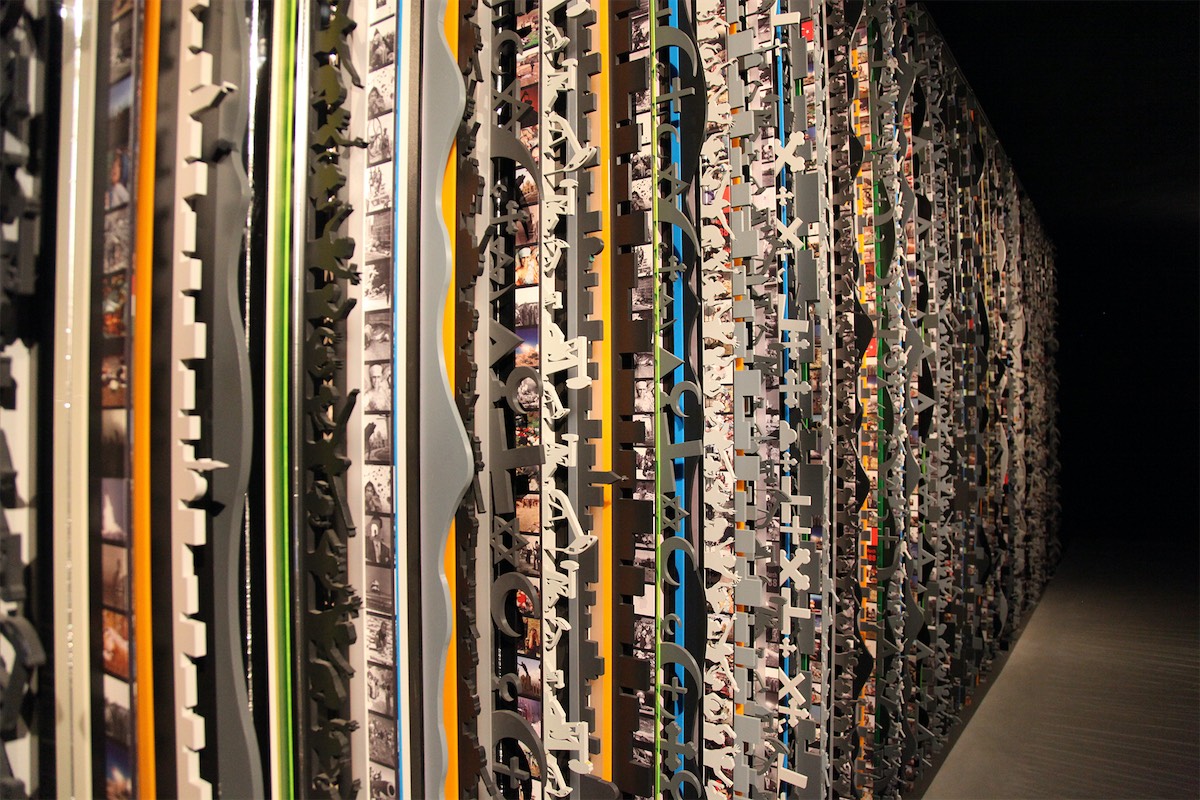1 October 2019 – 1 September 2021
The Alphabet of Memory
Heydar Aliyev Center, Baku
Represented by Marlborough Gallery
Curated by Emin Mammadov
Wish Tree
2019
Mixed Media
500 x 250 x 250 cm
Recm
2012
Enstalasyon
Chamber of Immortality
2018
Installation
Encounter
2012
Mixed Media
280 x 800 x 30 cm
The Alphabet of Memory explores the concepts of memory and immortality through the language glass. Since the conventions of the culture that we were born into impact how we carve up the world into the concepts and how we construct these concepts into elaborate ideas, the exhibition probes whether our culture can affect our notions through the linguistic characteristics imposed on us.
The memory of the thousands of people who perished in Halabja propelled the artist to create Encounter. This comprehensive work seems like a colossal barcode that its content has to be deciphered and decoded when viewed from a distance. Rather than reflecting the complicated history of violence chronologically, the artist has fashioned vertical lines that run parallel. Each panel has depicted the symbols of monotheistic religions. Photographs no bigger than contact prints attached to these panels in the background. They bear witness to personal histories that rarely play a role in the grand narratives of the all-powerful.
Wish Tree consists of bicycles, entangled together and piled up like in a dance, shaped not unlike a fir tree. A spiral-like amassment of metal conveys a sense of rotation as though something is coiling around a shaft. The work is aglow from the red colouring, like a fire flickering up and out of a bowl. In the artist’s oeuvre, the work seems is a new aspect of foregrounding the sculptural shape in its objectivity. It concerns a tree, a so-called wish tree, found in many cultures in a modified form as the Christmas tree or maypole. In Anatolia, the related ritual is called nahıl that people entrust their worries and wishes to a tree.
In Chamber of Immortality, the surrounding walls of the work encircled with the skulls arranged horizontally and vertically in the rainbow colours. The large silver skull, constructed from smaller ones, indicates in its central position what this installation is all about. Death as indeed eternal life: the search for immortality which the two-horned Dhul Qarnayn set out to seek without ever finding it. All the horns on the inner walls writhe like snakes, and even the horn emerging from the mouth of the colossal skull has a snake-like character. This imaginary movement signifies life in contrast to the rigor mortis of the craniums.
Dedicated to Nasimi, a romantic poet of Azeri origin, Recm consists of a cage in which black letters of the alphabet scattered. They are lying there in clutter as though thrown into it and oozing out of the latticework. Likewise, letters are lying scattered around the cage, with a few of them even in colour. Recm is an Arabic term and means stoning, an act prohibited under international law whereby apparent delinquents tortured death by throwing stones at them. A language annihilates. Not only ethnic, linguistic roots, but also the sense of community.
The Alphabet of Memory sponsored by Daax Corporation represents a moral appeal to respect cultural heritage and not stone it to death.
Dilek Ağacı, Naz Güler
Recm, Mehmet Mahsum Elmas
Haydar Aliyev’e Vefa, Naz Güler
Ölümsüzlük Odası, Ferhat Elik ve Naz Güler
Yüzleşme, Hüseyin Atiş



